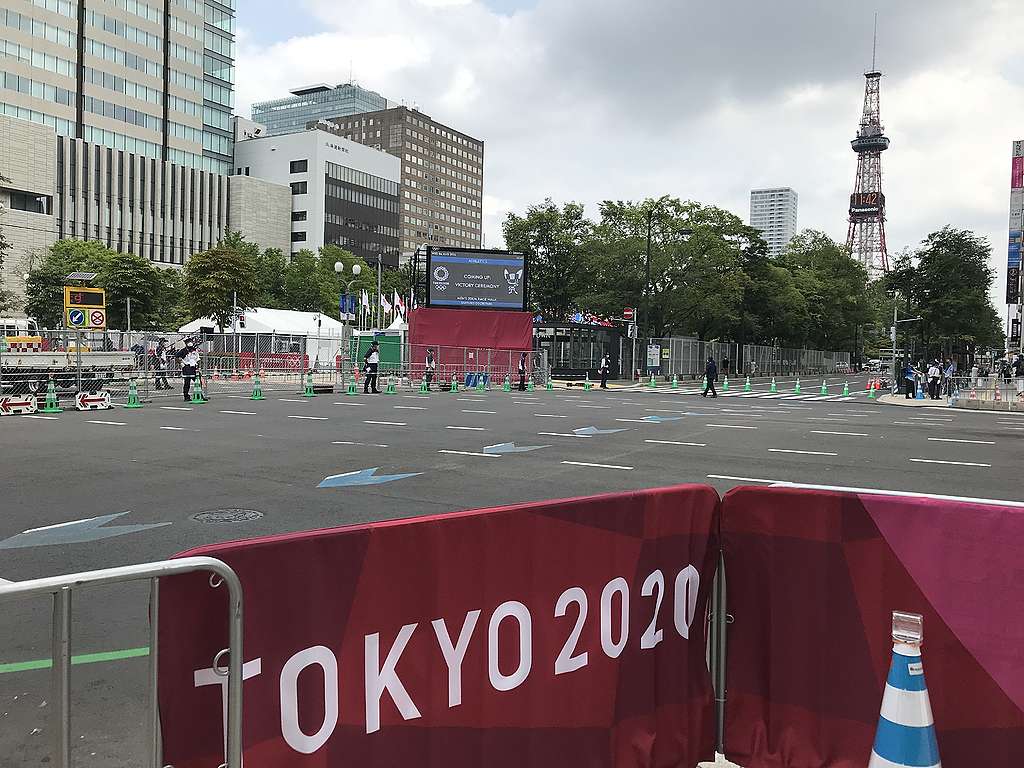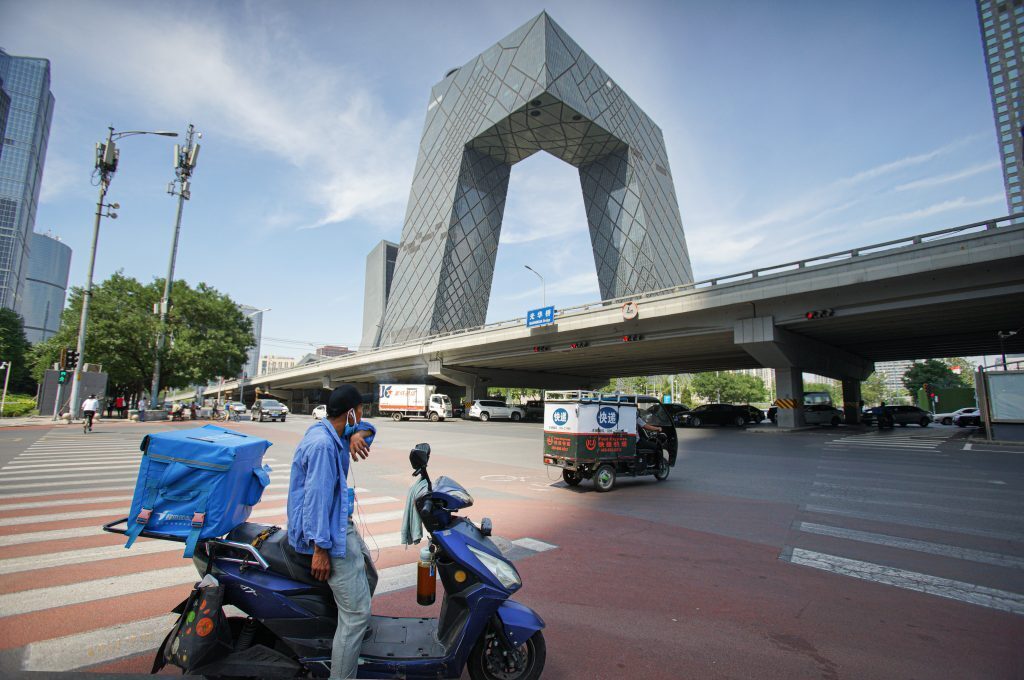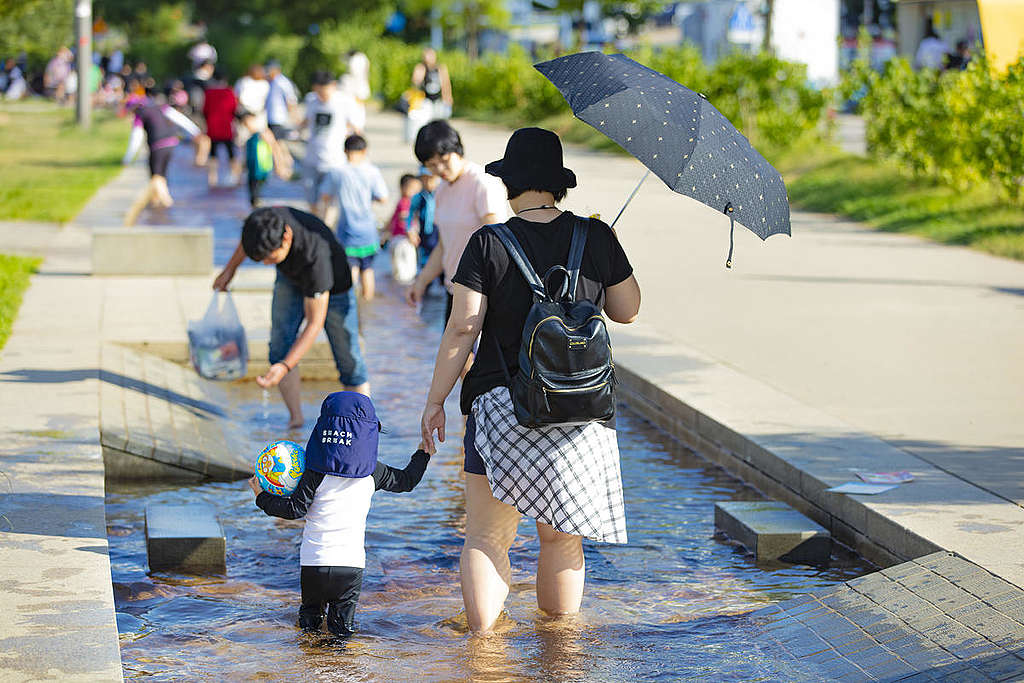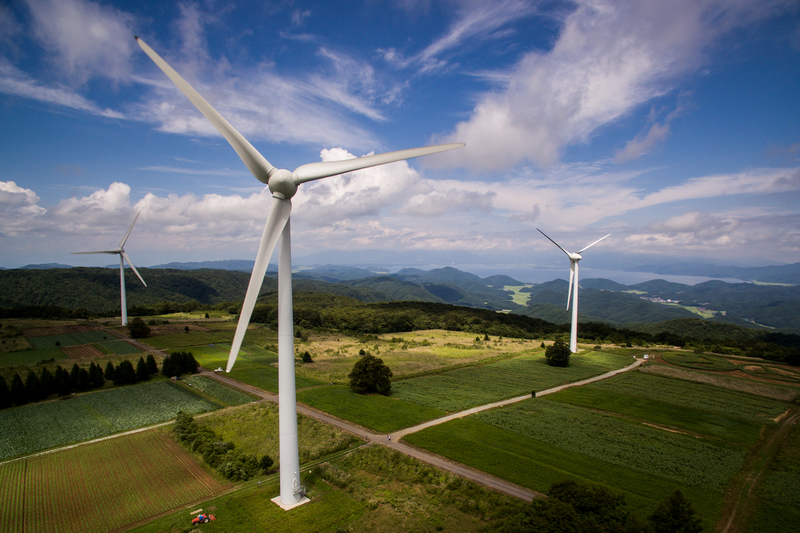I’m sure you’ve all been watching the Tokyo Olympics. Unfortunately, one gold medal that Japan looks set to win is the one for the hottest and most humid Olympics in history.
Before the Games even began, Russian archer Svetlana Gomboeva fainted due to heat exhaustion, while men’s triathlon participants later collapsed after the event. On August 1, the Organisation Committee admitted that 30 staff and volunteers had been treated for a heat-related illness during the first week of the Olympic Games.
It’s true that summers in Tokyo are usually hot and humid just because of the city’s urban geography, but science also tells us that dangerous and extreme temperatures like the ones Japan’s capital is experiencing now are consistent with the climate crisis. The climate emergency is causing a long-term climb in average global temperatures and an average increased frequency and intensity of extreme hot weather events.
Is Tokyo’s outrageously scorching Olympics yet another warning sign of the growing severity of the climate crisis?
A new report by Greenpeace East Asia may have the answer. Our just-released study dug into decades of urban temperature data cities across East Asia and found that indeed the region’s summers are recording hot temperatures earlier on average and they are staying scorching for longer. Let’s have a look at the results.

What did we do?
Greenpeace East Asia crunched temperature data for 57 cities across China Mainland, Korea and Japan, with cities selected based on population size. We compiled data on the first hot day of the year (30°C or higher), as well as the frequency of extreme hot weather. We defined “hot days” as 30°C to and “extreme hot days” as 33°C.
We used records that went back decades to make sure we were capturing real long-term trends and not just short-term variations in weather patterns.
What did we find out?
Hot days are arriving earlier and lasting longer
Our painstaking research found that in more than 80% (or 48) of those 57 cities across East Asia, the first day of hot summer weather had been arriving progressively earlier over the years. Different cities showed different rates of early summer arrival. For example, in Tokyo and Seoul, the first hot day of the year showed up on average 11 days earlier during the period 2001-2020 compared to the period between 1981 and 2000. In Shanghai, it had moved 12 days earlier, while in Japan’s Sapporo, it had shifted forward a whopping 23 days. In Sapporo, the temperature hit 34°C ahead of the Olympic marathon, and has exceeded 30°C for 16 days in a row, a record since 1924.
Heat wave data from China showed that these extreme weather events were also lasting longer. From the late 1990s up to 2019, heat waves in Guangzhou typically lasted three to six days, with a maximum of seven days; heat waves were recorded almost every single year. However, in the 1960s and 1970s, the maximum average annual duration was four days, and for more than half the years there were no heat waves at all.

Scorching weather is more frequent
Our analysis also revealed that high temperatures were becoming more frequent.
During the last 20 years (that is between 2001 and 2020), the frequency of heat waves in Beijing had almost tripled compared with the previous 40-year period. In Tokyo, the number of extreme hot days has more than doubled since the 1960s. The southern city of Guangzhou has recorded 98 heat waves since 1961, with 73 of them — or three quarters of them — happening since 1998.
In Japan, the change is also very stark. Tokyo went from an average of 13 days of extreme temperatures (33°C) per year in the 1960s to more than double that — 27 for the period 2011-2020.
It has been climbing in Korea too. For all cities in the country that we studied, the past 10 years has seen the highest number of 35°C days over the past six decades. The port city of Busan never experienced more than 10 days of extreme hot weather annually from 1961 to 2010, but by 2018 it recorded 18 days of hot scorching temperatures.
What does this mean?
More frequent, more intense, and longer spells of extreme hot weather have serious repercussions beyond making athletes ill at the Olympics. They are endangering ecosystems, economies, food supplies, and even human health.
This summer in East Asia offers a glimpse of what is to come. Earlier this year in May, abnormally hot weather in Guangdong, China forced factories to shut down for hours or days because of excessive energy demand. In Korea, where regions across the country were put under heat wave warnings or advisories in July, hundreds of thousands of livestock were reported dead due to the heat waves.

Most at risk are the elderly, children, those people who must work outdoors (such as farmers), and those with chronic health conditions. The heat wave that scorched East Asia as recently as 2018 is linked to the deaths of more than 1,000 people in Japan and Korea. Thousands more were rushed to hospital with heat stroke related health conditions.
What do we do now?
There is abundant scientific evidence that these trends are linked with the climate crisis. In fact, scientists have been saying this for years. Our new report is just confirming this fact, mapping areas of growing climate risk, and revealing the serious scale to which it has developed over the years.

This means, of course, that we can do something about it.
Governments must take immediate measures to protect people’s health amid extreme weather. They must make a concerted, ambitious and urgent switch to cleaner energy sources and rapidly phase out fossil fuels. The burning of coal, oil and gas is the key driver of the climate crisis, and by ditching these today we can save lives tomorrow. That means scrapping plans and withdrawing all financing for building new dirty power stations, accelerating the phase out of existing ones, and putting all our efforts into building up a sustainable green energy grid from 100% clean and renewable sources. World leaders have already made carbon neutral commitments. Now we need them to make good on these promises and instigate real change today.
With the world tuned into the Tokyo Olympics, we hope that news on the sidelines of the extreme heat affecting sporting performances will push governments in the region and across the world to really shoot for gold for their countries in the fight against the climate crisis. After all, it’s more than just medals at stake; it’s our planet.


